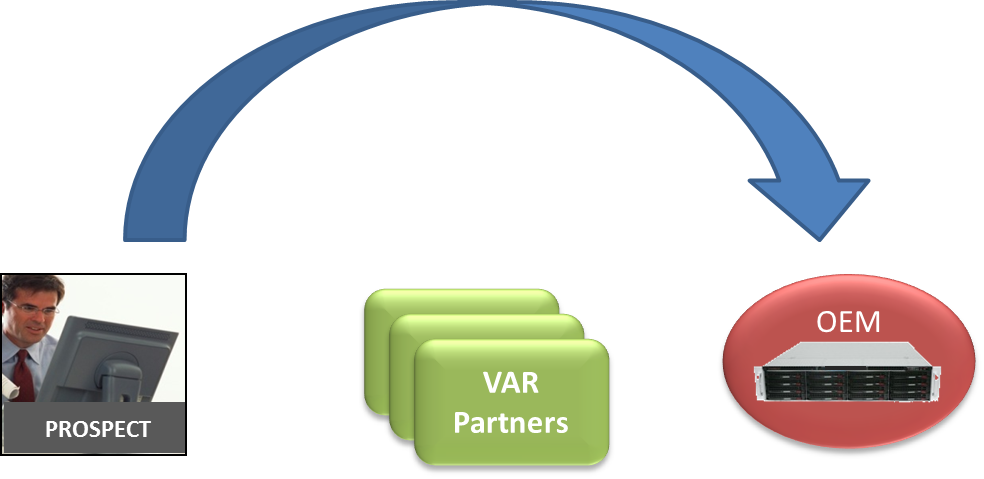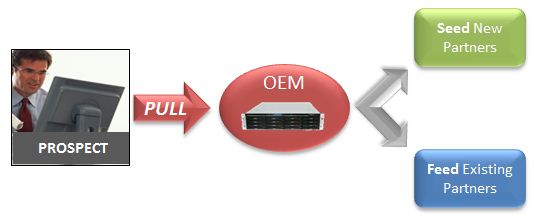3 Steps to improve VAR Partner Marketing Programs
Are your VAR partners failing to generate demand for your products?
Are you spending time and Marketing Development Funds (MDF) signing up new partners only to have them produce mediocre results?
Every IT manufacturer knows that VAR channel leverage is the key to growth. OEMs can’t scale without an increasing number of good channel partners to leverage their sales efforts. The problem is that today just about every IT manufacturer has basically the same story–good products and a “channel only” VAR program.
So why are VARs just fulfilling demand instead of creating it?
The answer may lie in how buyer behavior has changed.
OEMs spend a significant amount of Marketing Development Funds (MDF), time and effort trying to get partners to create demand and sell their solutions.
The buyers, however, aren’t biting. In fact, they can find all the information they need by bypassing the VAR and going right to the manufacturer, wasting marketing funds.

Figure 1 – Serious buyers ignore VARs and go right to the manufacturer wasting money and opportunities
Technology manufacturers themselves have healthy websites with unlimited information about their products; information that is much more up to date and relevant. Why would an end user waste time in the early stages of a project (a critical time for the vendor that wants to win high margin deals) with a reseller when he/she can research solutions directly with the manufacturer? Answer: They wouldn’t.
Quite simply, VARs don’t often create demand any more, they fulfill it. Yet they consume marketing dollars to entertain prospects the OEM would have found anyway.
To solve this problem and get back on track, OEMs must realize that they hold the key to channel growth. A strong channel is built by finding new sales opportunities that can be transferred into the channel for fulfillment, not signing new partner agreements or wasting MDF.
OEMs can increase channel width (new partners) and channel depth (more deals per VAR partner) by putting in place a strong program that surfaces sales opportunities and gets them to their channel partners quickly.
Here’s the 3 steps:
- The OEM must create compelling content that draws in anonymous, potential customers to the manufacturer’s website(s). Think blogs, non-gated whitepapers, etc.
- There must be a strong offer that appeals to an early stage, serious prospect and compels them to reveal their contact information.
- Once captured, there must be a standard “hand off” process that connects the new prospect with a new or existing channel partner.
The following diagram shows how a pull process works. Since serious buyers always research solutions directly with the OEM, it makes sense that the OEM takes the primary responsibility for B2B lead generation. As inbound visitors check out the OEM’s website, strong calls-to-action can entice and motivate serious buyers to respond.

Figure 2 – The pull method places the OEM front and center in lead generation activities on behalf of channel partners
The power of this method is evident when a new, potential customer engages with the OEM. Suppose a prospect responds to the website offer and contacts the sales group of the OEM. With a simple question, the sales rep can “seed or feed”. Here’s how it might go.
Hello Jim,
This is Bob at StorTech. I approved your quote estimate and it has been sent. If you have not received it, please check your spam filter.May I ask you a question?
Do you have a specific Value Added Reseller you prefer to work with, or no?
The Seed (increases channel width)
Now, if Bob responds with “Yes, I like to work with DataPart, Inc.” and they are not yet a partner you have the opportunity to seed a new partner relationship and bring DataPart into it’s first deal.
The Feed (increases channel depth)
However, if Bob responds with “No, I really don’t have a preferred VAR” then you are in a unique position to “feed” one of your existing partners a new opportunity.
Either way, as long as you the OEM is capturing and distributing the inbound leads, you can direct them to where it suits your channel program the best. When you leave it up to your channel partners to find new customers you may find yourself spending a lot of money on co-marketing events with few results.
Summary
In today’s self-service environment, IT Original Equipment Manufacturers (OEMs) are turning to a more direct approach to channel building. As buyers resist and ignore channel partner marketing efforts, smart OEMs are picking up the ball and driving the lead generation/capture process. Focusing on great content, strong website offer(s) and a formal hand-off process for new/existing partners can help any IT vendor build a successful channel.

